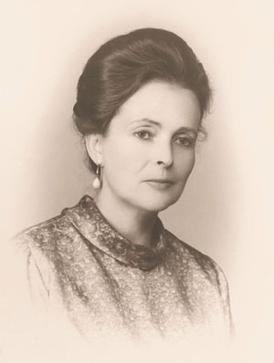Rosette Batarda Fernandes facts for kids
Rosette Mercedes Saraiva Batarda (born October 1, 1916, in Redondo, Alentejo, Portugal – died May 28, 2005) was an important Portuguese botanist. A botanist is a scientist who studies plants. She was married to another famous Portuguese botanist, Abílio Fernandes.
Contents
Rosette's Journey in Science
Rosette started her studies at the Escola Secundária Maria Amália Vaz de Carvalho in 1928. She later graduated from the University of Lisbon in 1941 with a degree in Biological Sciences. This means she studied living things, especially plants and animals.
In June 1941, she met Abílio Fernandes at a science meeting in Lisbon. They soon got married. They moved to Coimbra in August 1941. Abílio became the Director of the Museum at the University of Coimbra.
Working with Plants
Rosette worked hard to organize and update the plant collections at the university. These collections are called a herbarium. She also made a list of seeds from the Botanical Garden.
She loved exploring and went on many trips to collect plants in Portugal. She also traveled to Mozambique with her husband. They gathered huge collections of plants. These collections helped grow the plant material at the Botanical Institute of Coimbra and the Center for Tropical Research.
Sharing Her Discoveries
Rosette was very active in the scientific world. Between 1944 and 1991, she attended 41 international meetings. These meetings were held in countries like Spain, France, and the UK.
From 1945 to 2000, she wrote about 250 scientific papers. Most of her papers were about plant systematics. This is the science of classifying and naming plants. She also wrote about karyology, which is the study of chromosomes in cells. She also studied ethnobotany, which looks at how people use plants.
Rosette described more than 50 new types of plants. This means she found and named plants that scientists had not known about before!
Her Legacy in Botany
Rosette Batarda Fernandes is remembered in the names of several plant species. For example, a plant called Marsilea batardae Launer was named after her.
She worked with her husband, Abílio Fernandes, on many papers. Especially between 1945 and 1947, they published studies on the chromosomes of flowering plants.
Studying Plants from Different Regions
Rosette wrote many important papers about plants from the Macaronesian islands. These papers appeared in journals like the Bulletin of the Broterian Society.
She also helped create the Flora Ibérica (Volumes III, IV, and V). This is a big book series about plants found in the Iberian Peninsula (Spain and Portugal). She wrote about eight different plant groups for this project.
Rosette also contributed to Flora Europaea. This is another large work that describes plants across Europe. She studied 11 different plant groups for this project.
For plants in Africa, she published 80 papers between 1954 and 2000. Her work appeared in journals like Conspectus Florae Angolensis and Flora Zambeziaca.


